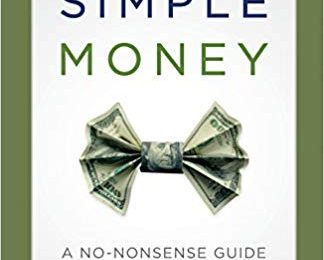Cup Handle Chart
Contents

The image above displays the standard cup and handle pattern. To trade this formation correctly, a trader should place a stop buy order slightly above the upper trendline that makes up the handle. This way, the buy order will only execute if the price breaks above the upper resistance level. This will avoid jumping into a cup and handle pattern too early by entering a false breakout. For traders who want to add a little more certainty to their trade, they should wait for the price to close above the upper trendline of the handle.
Secondly, practitioners have found issues with the depth of the cup. While a shallower cup can represent a bullish signal, a deeper cup can produce a bearish signal. It can be confusing to pick up a particular cup and invest on its basis as this can lead to wrong decisions. Lastly, it has been identified that at times cup and handle patterns can be unreliable in illiquid stocks.

An inverted “cup and handle” is used to identify selling opportunities, which is a sign of an upcoming bearish movement. This pattern moves in the opposite direction to the cup and handle, forming an “n” shape and an upward handle. The cup and handle pattern was made popular by William O’Neil, which now has expanded into all sorts of trading scenarios. Traders have come to know the cup and handle as a bullish continuation pattern that is a highly accurate predictor of sizable breakouts.
with Handle Chart Pattern
If you consider the beginning point of the bullish move and the end point of the bearish move, they are at approximately the same level. This bullish price move slows down gradually and eventually becomes bearish. You can also see that the two targets have been applied from the moment of the breakout.
What happens after cup and handle formation?
Once a cup and handle pattern forms, in order to generate a bullish trade signal, the price must break above the top of the handle that has formed. A drop below the handle is not necessarily bearish. The price may drop slightly, then rally back up, forming another handle or breaking above the initial handle.
The second target is equal to the size of the cup beginning from the moment of the breakout. These are the bullish cup with handle and the bearish cup with handle. The cup part of the formation is formed by a combination of a price decrease and a price increase.
How to withdraw the money you earned with FBS?
This will help you confirm a downward breakout on the inverted cup handle pattern. A cup and handle formation is considered significant when it follows an increasing price trend, ideally one that is only a few months old. The older the increase trend, the less likely it is that the cup and handle will be an accurate indicator. The trade volume should decrease along with the price during the cup and should increase rapidly near the end of the handle when the price begins to rise. If the cup and handle form after a downtrend, it could signal a reversal of the trend.
What happens after a cup and handle pattern??
If a cup and handle pattern is confirmed, it will usually be followed by a bullish price move upward. You can pick a price target based on the size of the cup, but it becomes much less clear what will happen after the initial breakout from the cup and handle pattern. For a better idea of what will happen after the cup and handle, zoom out and take a look at a larger time frame. Is there a longer-term uptrend or downtrend? Has the volatility been increasing or decreasing? These sorts of larger contextual clues can help if you plan on holding positions beyond the initial breakout.
Price action is an important and common trading strategy that traders use to identify entry and exit positions. If you look at the regular cup and handle pattern, there is a distinct ‘u’ shape and downward handle, which is followed by a bullish continuation. This means the inverted cup and handle is the opposite of the regular cup and handle. Instead of a ‘u’ shape, it forms an ‘n’ shape, with the handle bending slightly upwards on the chart. One of the most important chart patterns in the stock market is the Cup and Handle Pattern, invented by William O’Neill.
Strategy #2 – Sell the Supply Line
The stop-loss order should be set above $99, since that is the halfway point of the cup. When a stop-loss is below the halfway point, it is better to reject such trades. The cup and handle pattern is considered a bullish signal, and the formation of the handle (the right-hand side) can take anything from 1-4 weeks to 3-6 months or even more than a year.
The https://bigbostrade.com/ is complete when the price breaks below the support line. This signals the end of the uptrend and the bears are coming. The cup part of the pattern should be fairly shallow, with a rounded or flat “bottom” (not a V-shaped one), and ideally reach to the same price at the upper end of both sides. The drop of the handle part should retrace about 30% to 50% of the rise at the end of the cup. For stock prices, the pattern may span from a few weeks to a few years; but commonly the cup lasts from 1 to 6 months, while the handle should only last for 1 to 4 weeks. A chart pattern is a graphical presentation of price movement by using a series of trend lines or curves.
Cup with Handle
Yes, the cup and handle pattern is considered a bullish continuation pattern. Strong andhigh-performing growth stocksgenerally form cup and handle patterns during their bull runs. The forming of this pattern allows the stock to base or take a “breather” before its next move up and is seen as healthy action. Cup and handle patterns seen in bear markets are generally not as reliable. A cup and handle is a technical indicator where the price movement of a security resembles a “cup” followed by a downward trending price pattern. This drop, or “handle” is meant to signal a buying opportunity to go long on a security.
- You’ve identified a cup and handle pattern, but before you jump into the trade, you must wait for a handle to form completely.
- Thanks man , one of the best articles on trading the cupnhandle pattern.
- So, after a cup and handle pattern forms, traders may expect the stock to move higher by about 20-25%.
- This technical indicator works flawlessly with the bearish cup and handle formation.
- This will help you confirm a downward breakout on the inverted cup handle pattern.
However, the bearish version can form when the pattern is inverted. The Cup and Handle pattern form when, in a nicely rising bull market, the price tests an old high and encounters selling pressure from profit taking. The selloff is not usually so steep because it is coming mostly from profit taking; hence, the price gradually declines and consolidates over a period of time. The price is briefly rejected and takes a little more time to build up strength before taking out the high. A Cup and Handle is considered a bullish continuation pattern and is used to identify buying opportunities.
By the https://forex-world.net/ the stock closed outside of the Ichimoku cloud, it was apparent that the stock’s tank was empty. Now that you’ve seen the bearish cup with handle signal, you can begin to pursue the bearish potential of the pattern. This acted as a confirmation of the bearish cup and handle formation.
Trading Quotes
You could also place an order above or below the https://forexarticles.net/ to buy or sell when the asset reaches a more favourable price. An order allows you to open a position at a price you choose, rather than the one currently being quoted. Please ensure you understand how this product works and whether you can afford to take the high risk of losing money. The perfect pattern would have equal highs on both sides of the cup, but this is not always the case.
Is inverted cup and handle bullish?
An 'inverted cup and handle' is a chart pattern that indicates bearish continuation, triggering a sell signal. Think of it as an upside-down cup and handle. If you look at the regular cup and handle pattern, there is a distinct 'u' shape and downward handle, which is followed by a bullish continuation.
As more bears come, the price moves lower to a certain point. Bulls then start coming in and take the price to the previous high.Bears come in again and push the price lower. If you ignore the importance of trading volume, then you really miss a lot of opportunities to make money in the market. As you can see on the chart, stochastic divergence occurs when the price rebounds and reaches the high of the handle. The EMA 20 line acts as a dynamic resistance that prevents the price to go up.
The position at which a breakout through the handle occurs has been shown. The position at which the price breaks through the handle has been shown. This breakout was followed by a significant decrease in the price of the currency pair. You can then draw the shape of a bullish handle on the right side of the cup. The second target should also be applied downwards right from the moment of the breakout.
In most cases, the handle should not dip below the top third of the cup for it to be a cup and handle pattern. A V-bottom, where the price drops and then sharply rallies, may also form a cup. Some traders like these types of cups, while others avoid them. Those that like them see the V-bottom as a sharp reversal of the downtrend, which shows buyers stepped in aggressively on the right side of the pattern. A conservative price target can be achieved by measuring the height of the handle and adding it above the resistance level at the top right-side of the cup.
You can then create a bearish handle on the right side of the cup. It should be applied downwards right from the moment of the breakout. The first target should be equal to the size of the bearish channel around the handle. The formation of the handle also begins immediately after the formation of the cup. The first target is equal to the size of the channel during the handle.
Both the Cup and Handle pattern and the inverse type tell a similar story about the market but from different perspectives . So, we will discuss the Cup and Handle pattern; the opposite applies to the inverse pattern. In this post, we will explore the Cup and Handle pattern, its structure and types, its significance, how to trade it, and the limitations.



Không có bình luận